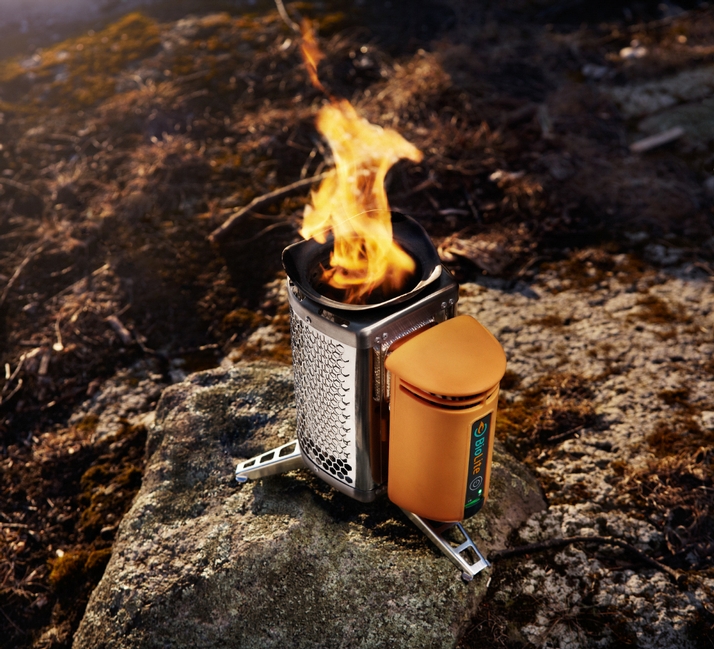The BioLite CampStove is no ordinary camping accessory. In addition to cooking your evening meal, this extraordinary piece of kit also charges your smartphone and tablet or other portable electronics gear. As the name suggests, the CampStove burns any biomass that you can find round the campsite – for example twigs and pine cones – instead of gas or paraffin. (See also: 8 best iPhone battery cases: best iPhone 5 and 5s battery cases of 2014 .) BioLite heralds this as environmentally friendly, but to get maximum heat from this source of fuel, fan-assistance is necessary. Indeed the stove does have a fan inside which is powered from an internal battery, and while you should certainly charge the battery before you leave home, a built-in generator serves to keep it topped up. Also see: 9 best portable USB chargers The science behind this electrical generator is not explained by the manufacturer, other than its description as a patent-pending thermoelectric generator. What’s more, it generates more electricity than is required just to maintain battery charge so the excess is available, via a USB port, for charging electronic equipment. Also see: Best travel gadgets.
BioLite CampStove review: cooking and charging
Nobone is likely going to buy the CampStove just to charge their phone so we were keen, first of all, to see how good it is at cooking. The bottom line is that we were able to boil 500 ml of water in four minutes which is comparable to similarly sized gas burners. Having said that, BioLite claim that you can boil a litre in that time and, to be fair, our pot probably wasn’t of the optimal size and shape, it didn’t have a lid, and we were still getting up to speed on how much fuel to use. On the other hand, this was summer with no cold wind to rob the unit of heat, so times would be longer under less ideal conditions. We should also point out that, once the fire had become properly established, the stove no longer emitted any visible smoke. Effectively, the fan ensures that any combustible material that would normally be lost as smoke is converted to heat, thereby improving efficiency. Similarly, when the fire went out, very little ash remained in the combustion chamber.
Even if the CampStove’s battery is fully charged before use, when you first light a fire the energy used by the fan will be greater than that generated. As such, excess energy isn’t available initially for charging external devices. We found that it was ready to charge, as indicated by a green LED, after three minutes, by which time flames were visibly licking around the water pot. Occasionally thereafter, for example after adding fuel, the green LED may go out momentarily but generally, once the stove is up and running, there’s an almost constant supply of electricity for charging.
BioLite CampStove review: charging up a smartphone
Under these conditions, with a Samsung Galaxy Ace smartphone attached, we measured a charging current of 300 mA at 5 V, with occasional pulses to 450 mA. This corresponds to 1.5 W (and peaks of 2.25 W) – just a touch less than the continuous 2.0 W claimed by BioLite. This resulted in the phone’s 5 Wh battery charging at a rate of just over 0.5 percent per minute. At that rate, it would take around 200 minutes – 3 hours 20 mins – to charge the phone from flat. If you’re just boiling enough water for a cup of coffee, therefore, you’re not going to inject a lot of energy into your phone, but if you engage in extended gourmet cooking while you’re under canvas you’d do a lot better. What’s more, if fuel is plentiful, the stove could be left running to give your electronic devices a fuller charge. Also see Best holiday-planning apps.


